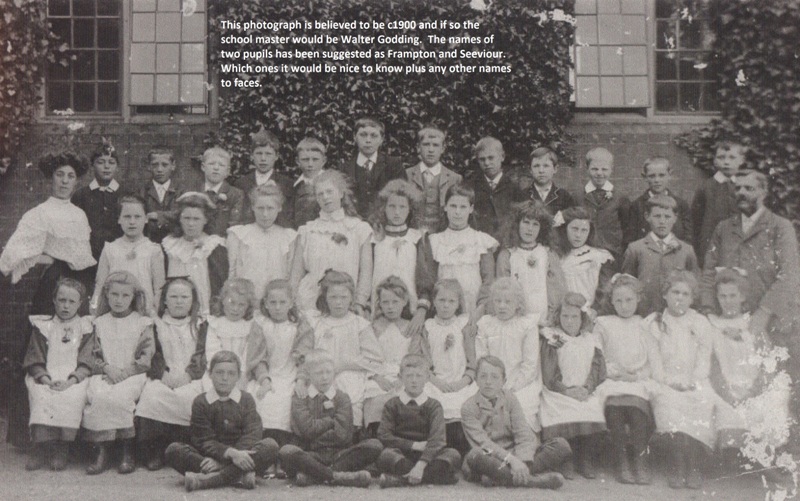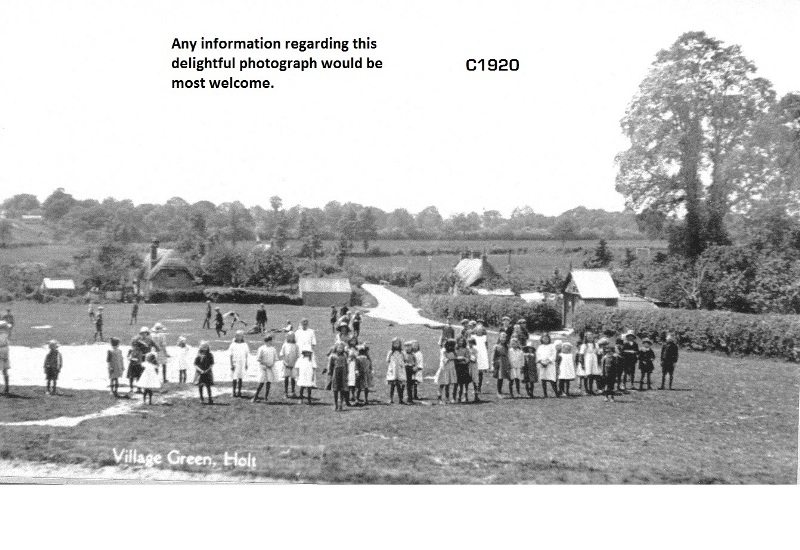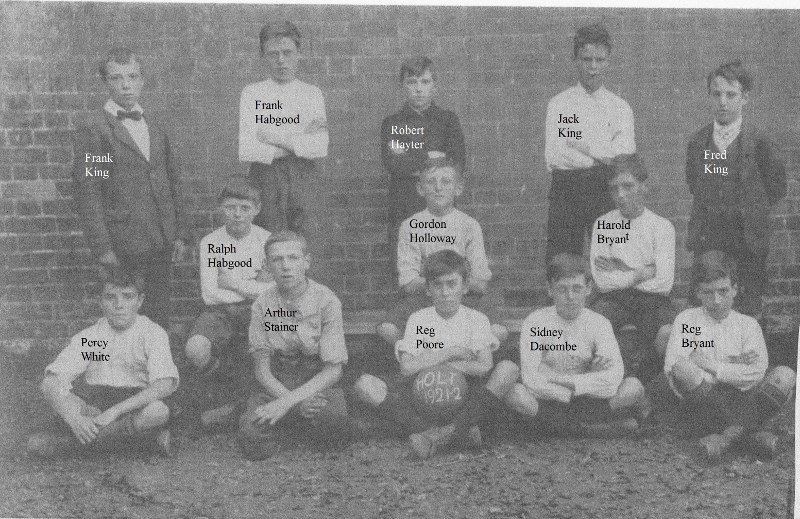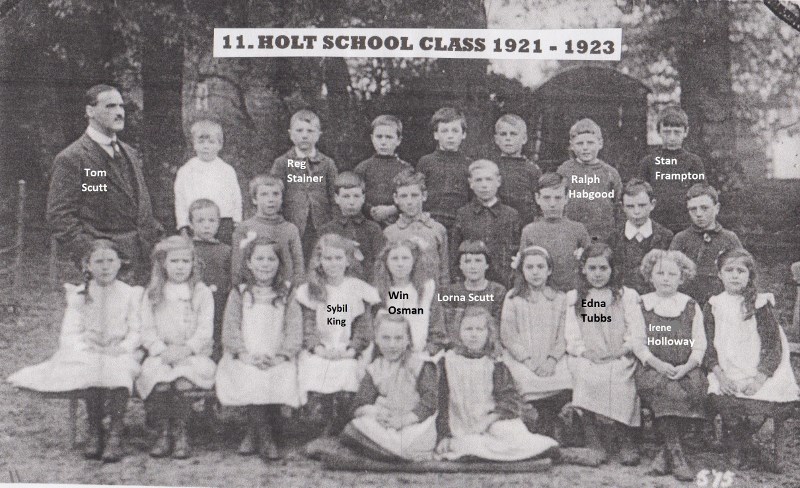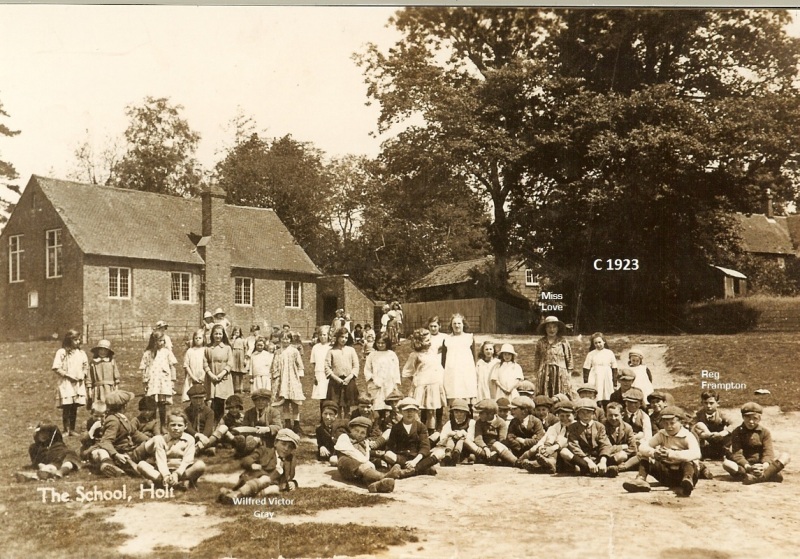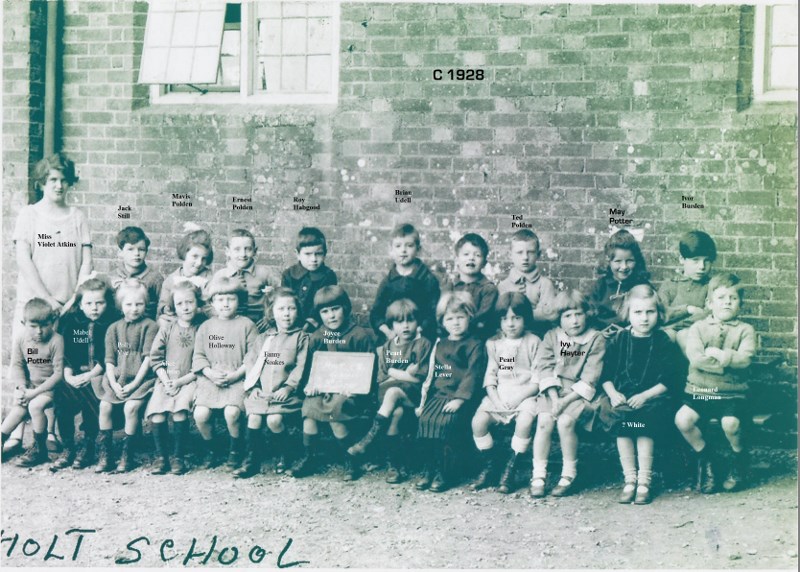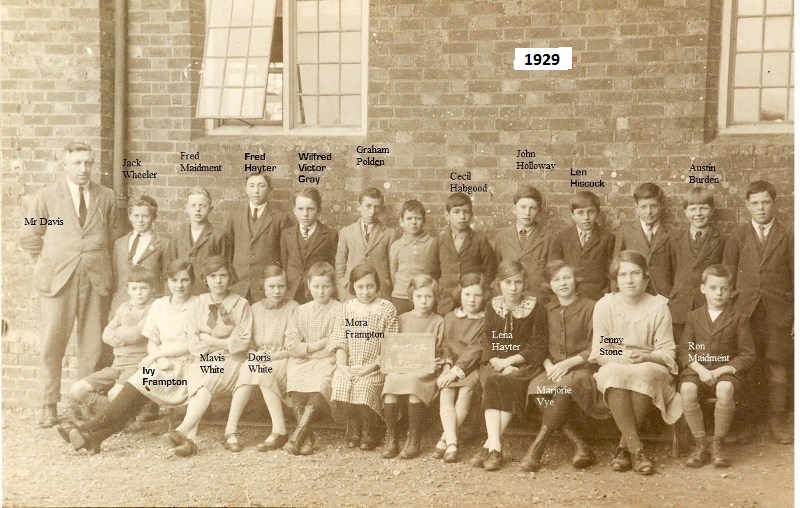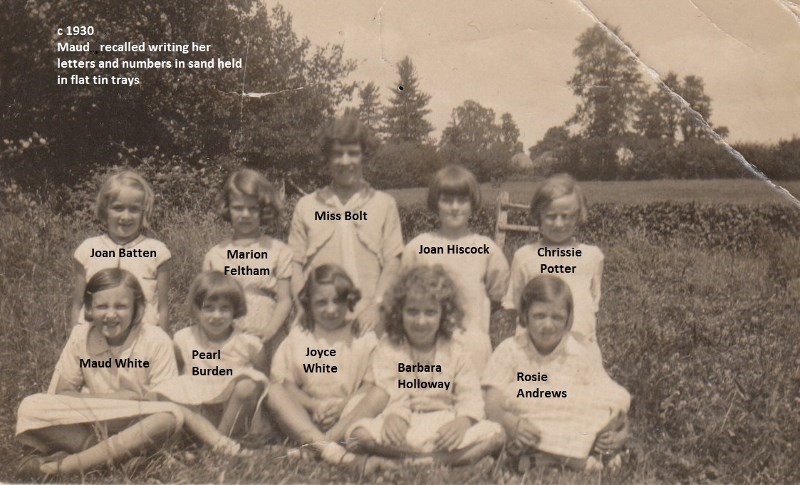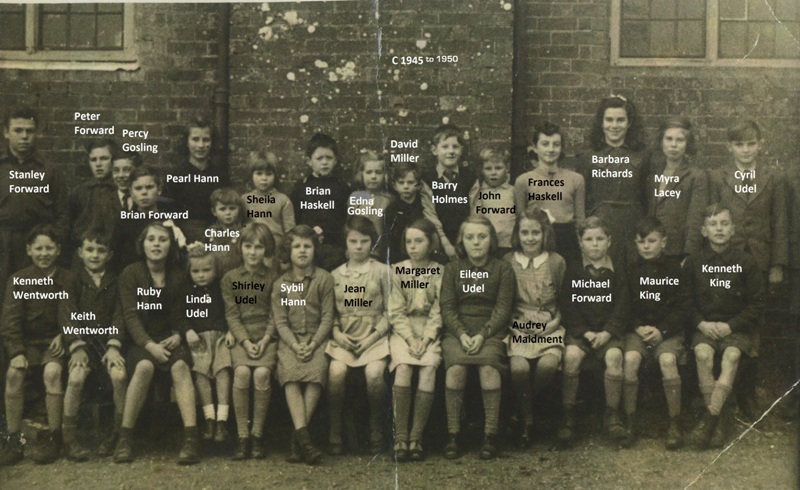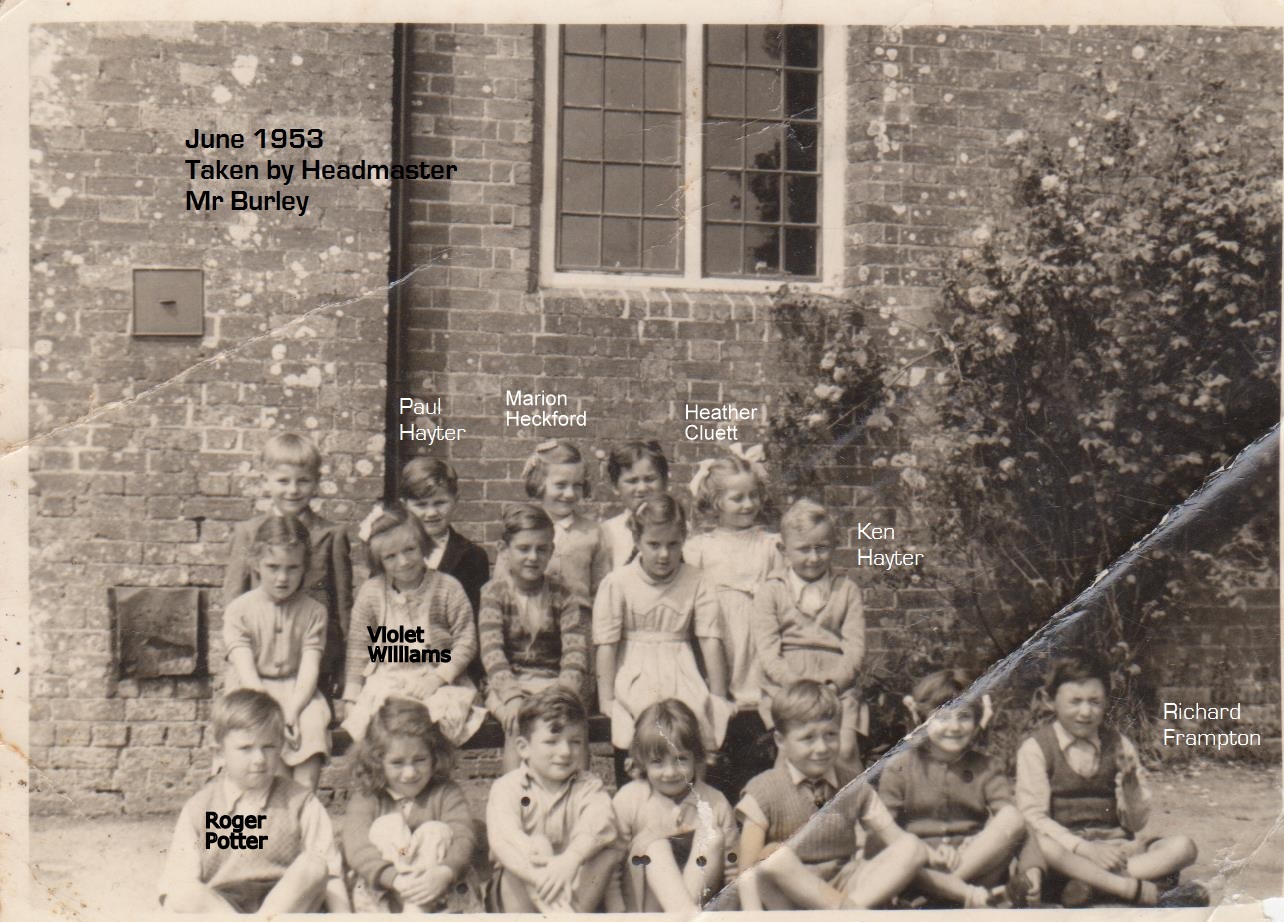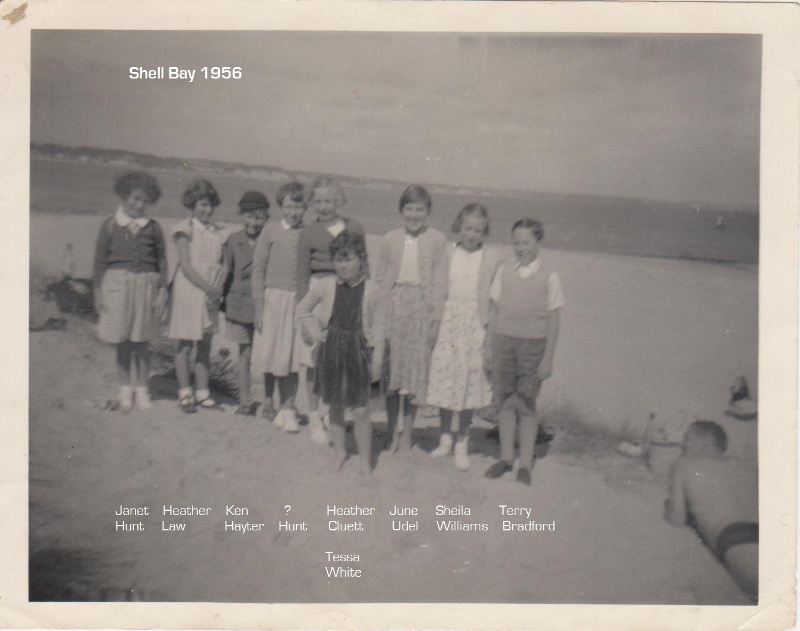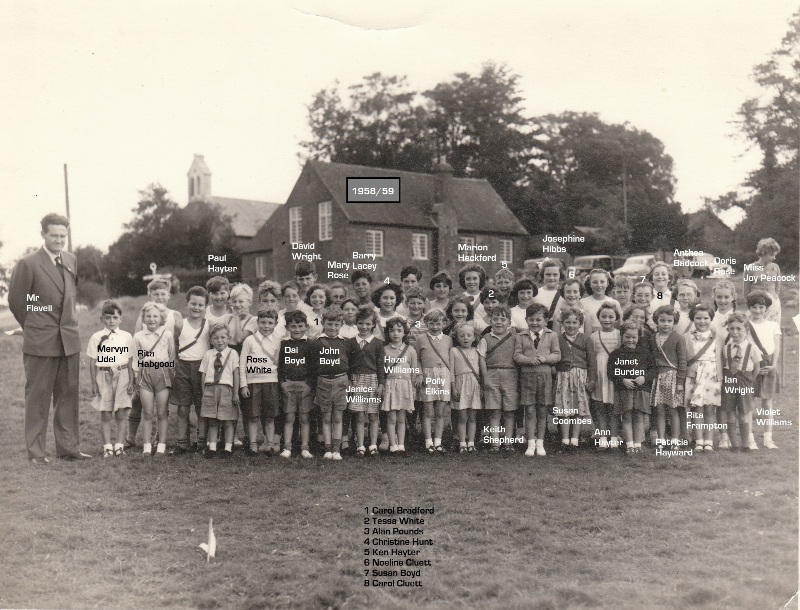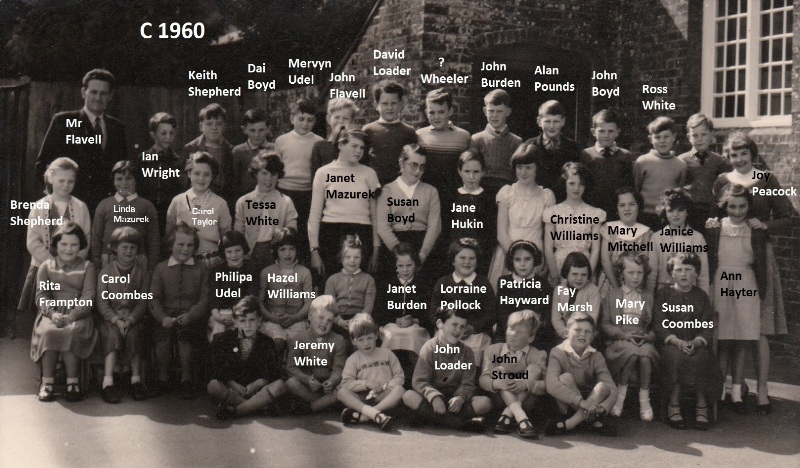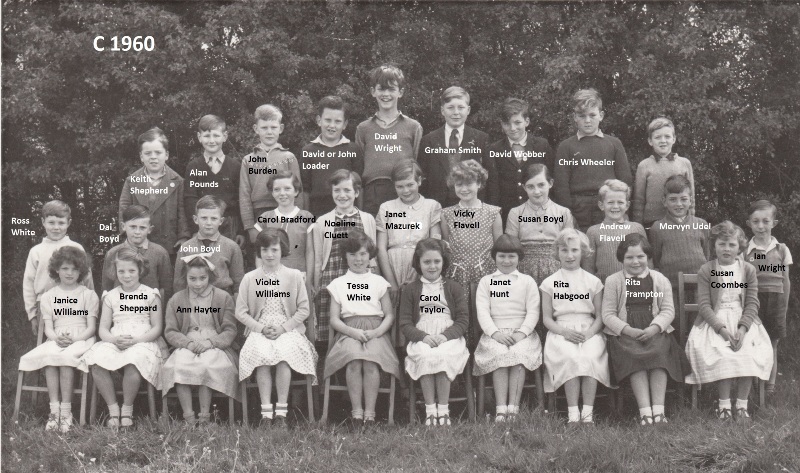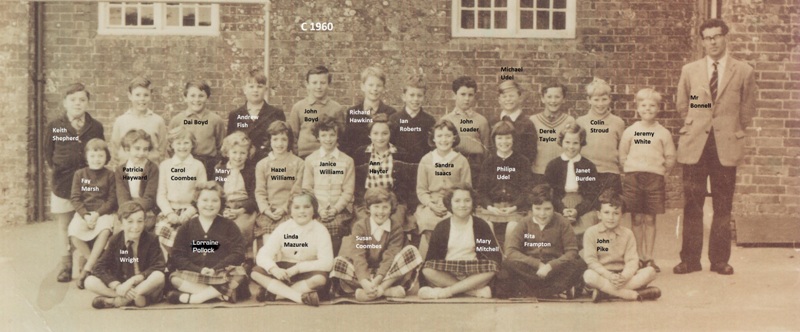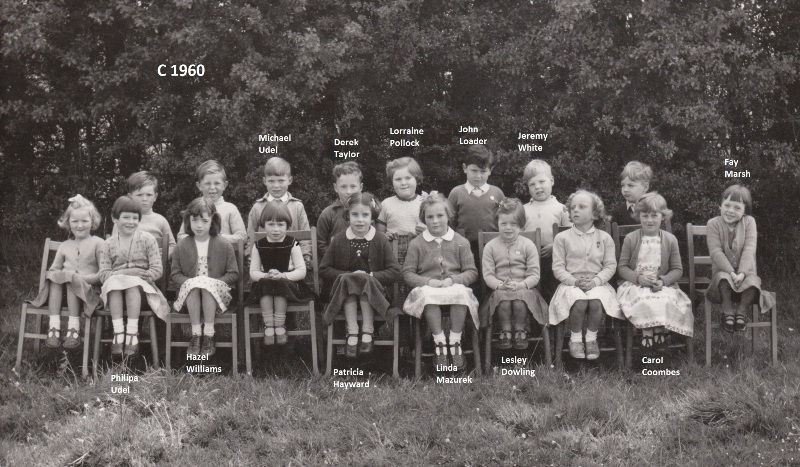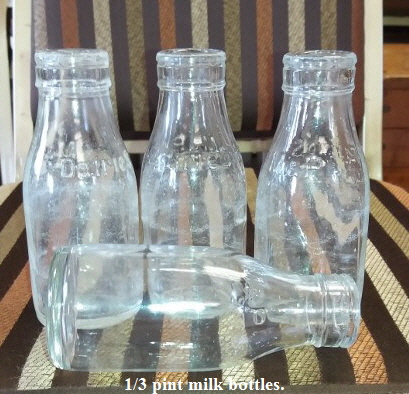History
A LITTLE BIT OF HISTORY AND A FEW PHOTOGRAPHS OF THE ST JAMES SCHOOL THAT WAS TO BECOME HOLT VILLAGE HALL
The local folk would have been buzzing with excitement, there they were just getting used to the new St. James Church finished in c1835 (designed by Tulloch and replacing an older chapel dating back as far as 1368 on the same site) and here they were with a brand new school finished and opening just a few years later c1840. It appears to have been an ongoing project with plenty of work for bricklayers, carpenters and labourers who lived locally, using bricks made just a couple of miles distant by Charles and his son Anastatius Cobb the brick and tile manufacturers in Holtwood and Colehill. The new pupils may have not been quite so enthusiastic having to replace their usual everyday clothing for wearing starched white collars for the boys and starched white aprons for the girls!! Both church, (now Grade II listed) and the school were built on Bankes Estate land which was bequeathed to the National Trust c1981.
A little bit of research for 1841 has found one school master in the area a John Best (born in Witchampton) aged 45 with his wife Sophia (born Middlesex) living on South Common (an area, it seems from a hand scribed map of the time, appearing as slightly north of Gaunts Common as we now know it) and, also in 1841, a school mistress Philadelphia (Phyllis) Mitchell living in Grange, both local areas. As Gaunts School wasn’t opened until c1856 we can safely assume them to be our first school teachers here in Holt.
1851 still shows John Best and his wife in South Common and Phyllis Mitchell still School Mistress living in Grange but we now find Anne Dancombe/Dacombe (writing of the time not very clear!) joining the group living in Gaunts aged 52 (born in Cowgrove). There is a slight overlap as the 1851 shows both John Best and the following Thomas Beckingham as teachers. A rather calculated guess here is that John Best gets ˜our” school up and running and then migrates to Gaunts when that opens with Mr. Beckingham taking up the reins in Holt. (Bear in mind here that the present St James school in Gaunts Common took the name of ˜our” school when it ceased being a school in 1973)
The 1851 and 1861 census show a Thomas Beckingham (age 38-48) (born in Lytchett) and his wife Susan in the, then, Post Office on the Green listed as a national school master with his son being one of the pupils. Also in 1851 there is a Sarah Blake aged 15 shown as a teacher in a school living in Broomhill.
HOLT MIXED NATIONAL SCHOOL
EXTRACTS FROM A WEEKLY LOG BOOK 1865-1890 (Dorset History Centre reference – S.142/2/1)
6.2.1865 “Thomas White who was a pupil teacher in the Dorchester Boys National School took charge of this school
23.1.1865. His wife died April 11th that year and he finished at the school on 28th August. Mr. Strickland took over on October 1st 1865 when there were five classes. His wife taught the girls needlework for two hours in the afternoon.
3.10.1865 Attendance was Boys 30, Girls 27. Thomas Cull and Fanny Rogers are mentioned as excelling in their studies.
18.10.1865 Whooping cough is very bad. He (Mr Strickland) complains many times of “dreadfully backward, quite ignorant” pupils
7.12.1865 Three pupils specifically mentioned, Rosa Elford, Mary Dowling and Rebecca Fraser. Weekly average attendance 63
19.1.1866 William James, Sarah Besant, John Cobb, Samuel Wareham, Rosa Squibb and Charles Besant mentioned.
6.3.1874 “The S****** generally come to school very untidy. I have warned them time & times. This morning I sent two of them home to have their hair combed. They were brought back by their sister who said their mother threatened to take them away from school if they were sent home again.”
17.7.1874 Edith Rabbits has injured her arm and probably won’t be able to write for a fortnight
12.8.1878 Masters – Walter Godding, Walter Way and G Ivamy
29.9.1878 “On Monday Mrs J**** came and took away her two children, because one, for being idle, was stood up and warned that he would be kept in if he did not behave himself. She intends seeing the Reverend C, Onslow who at present is away from home”
16.5.1879 The seamstress has been ill this week. Mrs Udell, the late seamstress has taken her place (Mrs Udell started 5.3.1875)
23.5.1879 Average attendance for week 110.8 the highest ever reached in this school (maximum capacity thought to be 200!)
17.9.1880 Between 40 and 50 boys had typhoid fever during the holidays so school was closed for another week. A week later more with whooping cough.
31.1.1881 Measle – school shut another week (on top of Christmas two weeks)
28.7.1882 Miss Henville, the successor of Miss (Florence E) Thompson as assistant came in to school on Monday afternoon. (Miss Thompson started on 9.9.1881)
April 1884 School staff were Walter Godding, E Smith, E Godding and Sebastian E Nichols
13.3.1885 “I caned Rosa W*****, a girl of 10 years of age this afternoon for stealing another girl’s dinner. This is not the first time she has committed the same offence”
16.9.1885 “Corporal punishment was administered to Richard I**** for swearing in school”
13.8.1886 New to school are George (age 9) and Edward Roberts.
22.10.1886 Amy Mackrell mentioned
11.3.1887 “Frank Cobb has ringworm on his chin and not able to attend school”
7.10.1887 “John W***** a stripe on the back and hand for inattention during singing”
5.12.1890 “Ernest B********* two stripes on the back on Wednesday for disobedience”
12.12.1890 Sir Richard Glyn called
10.4.1891 Away planting potatoes
24.7.1891 Attendance not as good as it might be, few engaged in picking fruit and leading horses in the hay fields
15.4.1892 Teachers are Walter Godding, Alice Lapham and Emily Goddin. Report done by Cecil G Paget
8.9.1893 Some pupils away picking potatoes and others picking acorns
1894 Miss Alice Lapham leaves as assistant after 6 years.
These are just a few notes of events over the years. Mainly the log book records how the weather influences the attendance; even heavy rain will cause low attendance with the struggle to actually teach the basic three R’s. The school attendance officer is often mentioned and the Reverend Canon Charles Onslow seems to attend school very frequently to examine the registers. Medical certificates are mentioned as being needed if sickness is the cause of absence. Singing and poems well used and, possibly of interest to you, the reader, lots of titles are mentioned in the log book – for anyone who is interested in the old songs and poems. Very often school closed because of scarletina (Scarlet Fever). Absenteeism was obviously influenced by the seasons of picking blackberries, acorns, potatoes and helping with the harvest.
The story continues with Walter Godding (born Portsmouth) still school master in 1901 living with his wife Emily (born Penryn in Cornwall), the sub postmistress, on the Green in Holt Sub Post Office. Their daughter Ada was then 14 and born in Holt. Lodging with them at the time was Winifred Goble, aged 21, listed as an assistant school mistress hailing from Fawley. Also in the village was Bessie Morgan (aged 15) working as a school teacher. Mr Godding was a long standing teacher at the school as he is still listed as Head Teacher in 1911 aged 61, but, by then was not living in the Post Office having probably downsized after his 7 children had left home or his wife had retired!
Turning now to Kellys Directories they show in 1907 Mrs Edith K Nokes, Mistress and Miss Ida Rose assistant mistress in Holt (back to 1911 census finds Alice Warr living in Mannington as ˜headmistress of an Elementary School” but which direction she took to go to her employment, again, unknown!)
Kellys again for Holt -1915-1923 shows Tom A Scutt “master”
1919 was a very significant time for the folk of Holt and much of its surrounding area when a very large proportion of the locality went under the hammer at Auction in the summer of that year. Until then the local people would have rented their cottages, farms, smallholdings and businesses and they now had the chance to buy their properties. A very tense time with a lot of families trying to come to terms with the end of the Great War with lost fathers, brothers and sons and the hardship that brought with it and then be confronted by the option to buy. Such unimaginable problems and decisions for our sleepy little area. The following is an interesting piece from the Vendors literature –
The Vendors are Trustees of a settlement for the purposes of the Settled Lands Acts 1882 to 1860 and are selling on behalf of Henry John Ralph Bankes an infant tenant in tail male in possession thereunder and they are selling pursuant to liberty given to them by an Order of the Chancery Division of the High Court of Justice dated 2nd July 1919 to exercise on the infants behalf the powers of sale conferred on a tenant for life under the said Acts and the purchasers shall not require any covenants for title from the Vendors in their conveyance except the statutory covenants implied by the Vendors being expressed to convey as Trustees”
One wonders if the adult HJRB would have made a similar decision!!
KELLY’S DIRECTORY OF HAMPSHIRE, WILTSHIRE, DORSETSHIRE AND THE CHANNEL ISLANDS – 1927 – HOLT
HOLT is a civil parish formed under the Local Government Act of 1894,” ,by an Order of the County Council, dated June 23rd, 1894, and confirmed by the Local Government Board Order No. 31,577, Sept.30 1894, and is in the Eastern division of the county, Badbury hundred, Wimborne and Cranborne union, petty sessional division, county court district and rural deanery of Wimborne, archdeaconry of Dorset and diocese of Salisbury. The ecclesiastical parish was formed in 1882. The church of St. James, three and a e governors of Wimborne Minster, and held since 1914 by the Rev. Charles Lawrence Hawkins M.A. of Magdalen College Oxford. There is a Wesleyan chapel at HOLTWOOD, and one at BROOMHILL, Uddens House, situated in a park of about 50 acres, is the residence of Mrs. Oldfield. The area is 5,558 acres of land and 4 of water; rateable value £4,732; the population in 1921 was 845 in the civil and 748 in the ecclesiastical parish. By a Local Government Board Order, dated March 25th 1886 a detached part of Chalbury parish, known as Uddens, was amalgamated with this parish (then part of Wimborne), and at the same time a detached part of Gussage All Saints, known as Mannington, was also added to it for civil purposes
Sexton, Tom Wheeler
Post Office, Holt Green “ Alfred Hibbs, sub-postmaster, Letters through Wimborne.
Colehill is the nearest money order and telegraph office, 3 miles distant.
Police Station – Christopher George Genge, constable in charge
Elementary School – Holt Green (mixed) built about 1840 for 200 children, Mrs. G. M. Quelch, temporary mistress
Elementary School, Gaunts Common, built in 1856 with residence for master for 120 children, Clarence Quelch, master.
Private Residents – Borrow, Mrs, Forest Cottage, Holtwood – Cooke George, Grange –
Hawkins Rev. Charles Lawrence M.A (vicar) – Oldfield Mrs, Uddens House.
Commercial – Adlam Charles, farmer Hills farm – Barnes Wm, smallholder, Whitemoor – Brine, Alfred, farmer, Holt farm – Brine Geo, farmer Bowers Farm – Budden, Arthur Bertie, farmer, Grange – Budden, Samuel, farmer, Cutler farm – Burden Hy, market gardener, Broomhill – Burgess, William Oakley, farmer Long Lane farm – Burt & Sons, automobile engineers, Lodge Hill – Cole Sidney, smallholder, Long Lane – Cornick Wm. Builder, Grange – Cutler David, Cross Keys P.H. Mannington – Dacombe Mark, smallholder, Broomhill – Deabill Wm, market gardener, Brookside Farm – Feltham Hy, smallholder, Pilmore – Feltham Sydney A, smallholder, Holtwood – Frampton Frank, smallholder, Holtwood – Gill Henry, cowkeeper, Grange – Gray William, smallholder, Broomhill – Habgood Hy, smallholder, Broomhill – Hatchard Herbert, farmer Mannington – Hayter, Albert Edward, farmer, Honeybrook Farm – Hayter Hy, farmer, Rowe Hill – Hibbs, Alfred, shopkeeper & post office – Hodder, Annie Maud (Mrs) C.M.B midwife – Holloway Jas, farmer Bothenwood – James Ralph, farmer Pig Oak – (150 acres or over), Keeping John, smallholder – Lacey William, smallholder Rowe – Laing A (Mrs) district nurse – Long Wm, farmer Forest Farm, Rowe – Mitchell, Frederick, gamekeeper to Sir R. F. Glyn bart D.S.O., D.L., JP – Morgan Charles, farmer Holt Lodge farm (150 acres or over) – Potter Charles, farmer Vicarage farm – Rogers bros, brick makers – Sloper Margaret (Mrs) The Stocks P.H. Grange – Smith, Mary Ann (Mrs) Old Inn – Stone Chas J smallholder, Oak forest – Trickett, Frederick, farmer – Trim Wm Hy, wheelwright, Grange – Turner Reginald Walter, farmer Petersham, (150 acres or over) White, Walter, smallholder, Holt Forest.
Mentioned previously was the brick manufacturer, the Cobb family, in Holt Wood. A little extra snippit in the local history “ a 19 year old Charles Cobb was caught poaching (Mr H Bankes wasn’t happy) and young Charles spent a year between 12.1.1819 and 12.1.1820 behind bars!) Jumping forward somewhat – between 1895 (Elias shown as a farmer) and 1903 Elias Budden had then taken the place of the Cobb family manufacturing bricks in Holtwood and still doing so in 1923. 1911 shows his daughter Rose working as a ˜school teacher” whether at Gaunts or Holt isn’t clear.
Incidental information regarding brick manufacturing in our area â?“ 1927 to 1935 it was Rogers Bros (Alfred George) in Holtwood and by 1939 he had taken his business to Witchampton. Also in 1939 was Clover & Son brick manufactures in Harts Lane with Harry Hand brick manufacturer listed as Holt Green (actually the opposite side of the road as we know it now)
We are now in living memory so there will be folk around who could, possibly, furnish more detail from 1927 romping up to the day school finished in 1973 should anyone like to contribute/correct/erase details herein or furnish more names on photos please contact the current secretary@holtvillagehall.co.uk
School closes in 1973 with the Education Authority having no further use for it after 12th July 1974. Subsequently in that year, after negotiations between Eddie Dacombe and Ralph Bankes a 50 year lease was signed to run from 12th July 1975 to become Holt Village Hall.
The property hereby demised (hereinafter called ‘the Trust Property”) shall be held upon trust for the purpose of a village hall for the use of the inhabitants of the Parish of Holt in the County of Dorset (hereinafter called “the area of benefit”) without distinction of political religious or other opinions including use for meetinqs, lectures and classes and for other forms of recreation and leisure-time occupation with the object of improving the conditions of Life for the said inhabitants.
Eddie Dacombe, David Stubbs and Edward Stewart were the original Charity Trustees. The village hall committee was headed by Eddie and David under whose leadership major conversion work was undertaken to provide a kitchen, entrance foyer and toilets prior to the hall being reopened in 1975. Sadly Eddie died in 1983 with many things left to do. The suspended ceiling was installed in 1984 to make the hall warmer and more attractive and this was dedicated to Eddie. Other improvements included a kitchen extension and later complete refitting of the car park fencing and tarmacking plus adding disabled access and toilet
Early years the committee and local organisations ran the annual Village Green Fair each August bank holiday on the village green to help raise funds for the upkeep of the hall. At the Queen’s Silver Jubilee a bumper fair was held and enjoyed by all who came. In the same year the skittles club was formed and a skittle alley was made to commemorate the Silver Jubilee and the skittlers still use the hall today.
In 1986 the Short Mat Bowls club was formed using equipment initially supplied by the village hall. Bowling still takes place very regularly.
The original wooden floor was removed and replaced by modern timbers in 1996 and rumour has it that a once pupil, Jack Webber, a local villager, returned to see if he could find a sixpence he lost through the original floor!! (We never heard the outcome!)
David Stubbs died in 2001 and from 1974 to his death he had been the key instigator in the running of the hall with its maintenance and financial wellbeing. There is a plaque to commemorate his sterling efforts.
Since then there has been a series of dedicated volunteers (currently eleven Committee members), constantly maintaining and updating this valuable facility for our local community with the current Trustees being Martin Stewart and Colin Palmer.
MEMORIES
Janet Mazurek has written that in 1958 Stewarts Nurseries (as it was then called) bought the farm at God’s Blessing Green from the Gray family turning it into a nursery growing roses, shrubs and fruit trees. My father Heinz Mazurek, was appointed foreman and we moved into the cottage now known as Pixies Holt, but which we called Nursery Cottage. In 1967 three Woolaway bungalows were erected in the garden of the cottage. We moved into one and the other two were used by other employees of Stewarts Nurseries. The cottage was then sold, and the nursery itself continued to grow on is present site.
Christine Gray writes to confirm that her father Wilfred Victor Gray (b 1913) (see the old photos) was born at Whitesheet and then moved to God’s Blessing Green Farm which was his parent’s farm. Christine’s family return to the old school for their family reunions on a regular basis.
Norah Gosling b 1930 tells of her time at the school. She referred to the fact that she had one week at Horton school and then the rest of her years were (1935-1949) at Holt. She recalls evacuees from Southampton, the Dawkins family. Plus other fellow pupils – Bob Evans, Les Read, Ray Steele, Stanley Ryman, Eileen Batten, Pam Coombes, Clifford Chinchin, Jimmy Evans, John Smith and teachers Mrs Saunders, Miss Ricketts and Mrs Martin and the fact that she had to cycle to Gaunts for cookery lessons. The free milk coming from the Potters at Vicarage Farm and they knitted scarves at school.
Others memories are of the sliding partitions to divide up the classes and the coke fires.
Not all was a happy time as a brief chat with a local resident who was at the school for two or three years tells that he wasn’t a happy chappy whilst at Holt but most of the little stories coming through are of happier times and a remarkable amount of ex-pupils still living just relatively short distances in and around the village. More memories are welcome and gratefully accepted
Acknowledgements to – (the late) Maud Hayward, Janice Bargery, Ralph Moore, Jane Sudron, Rita Brown, Joy Linnell, Pam Coombes, (the late) Ivy Frampton, Jo Elliott, Ann Sanyal, Richard & Sigrid Frampton, Nora Phillips, Nella Joy – with apologies to forgotten others.
Sources – Dorset History Centre, Wimborne’s Priest House Museum, ancestry.co.uk, HVH Minutes.
Prepared by Sandra Game 2014
